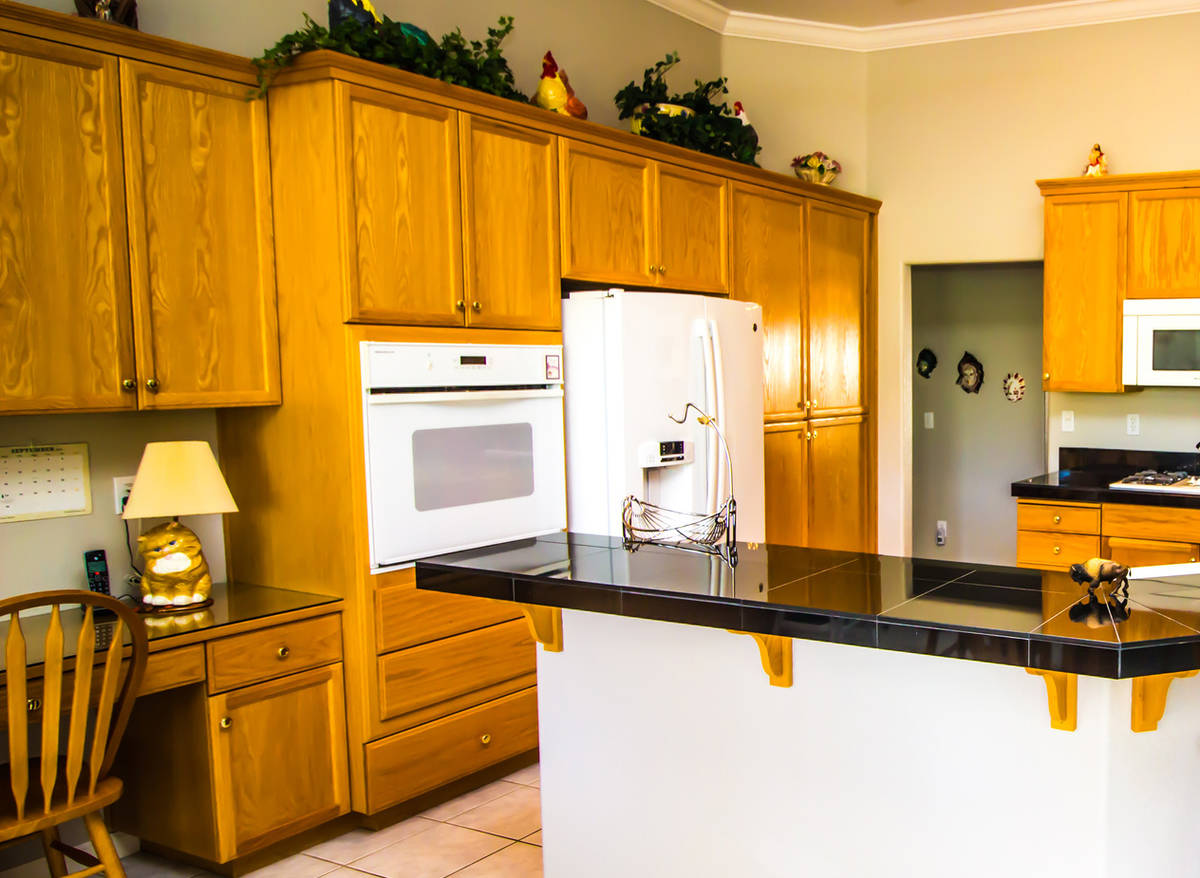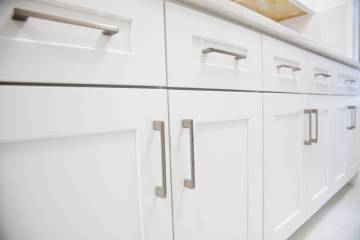Crown molding will need replacing with new cabinet
Q: I am remodeling my kitchen, which includes replacing my regular-sized refrigerator with a built-in model. The new one is much taller than the old one and I will have to replace the cabinet above it. Around the top of the cabinets is a continuous piece of crown molding that I don’t want to disturb, mainly because I don’t want to make the cuts to replace it. How do I find a matching cabinet and get the old one out?
A: A built-in refrigerator is impressive and menacing, but to install one, you must replace the cabinet above it first. The typical built-in refrigerator is 84 inches tall (you can adjust the leveling mechanisms 1 inch higher or lower) and start at 36 inches wide.
However, you won’t gain much extra storage volume inside the built-in one: Though taller, it is shallower. The cabinet depth surrounding the fridge is 24 inches deep, and the built-in fridge will tuck nicely into the opening you are about to create.
Typically, a wall cabinet is 12 inches deep. You will need to replace yours with a 24-inch-deep cabinet. You will have to break out the tape measure to determine the height of the new cabinet.
Measure from the floor to the top of the wall cabinets, then subtract 84 (the height of the refrigerator) to determine the height of the cabinet in inches. The width is the same as the old one.
With the measurements of the new cabinet, you can look for a replacement. Look for a manufacturer’s stamp or sticker in one of your cabinets. If you can’t find one, you may have to check with several manufacturers to get the right one.
Remove one of the doors from a cabinet to take along and match up the style and color. The door is held on by a couple of screws and it will remove easily. Once you find the matching cabinet, you will probably have to special order it.
While waiting for its arrival, you can remove the old wall cabinet to make way for the new one.
Regarding the crown molding: You will probably have to disturb it since you are changing the depth of the cabinet it surrounds.
You can certainly leave the crown molding in place and drop the cabinet down, which will leave the molding untouched. But when the new cabinet comes in, you will have to change it.
Before you remove the cabinet, you must separate it from the crown molding. Use a standard screwdriver and place it behind the crown and in front of the cabinet and slowly “goose” the molding from the cabinet.
If you are trying to leave the molding in place, you can make a gap between the two, then cut the nails with wire cutters, or use a hacksaw blade removed from its frame.
The cabinet will be held to the wall with a couple of screws near the top, and it will also be screwed through the face frame to its neighbor. Unscrew these face frame screws first. These are large screws that not only close the gap between the cabinets but also make them one solid unit on the wall.
After that, support the cabinet from falling and unscrew the remaining screws that hold it to the wall. Control the cabinet so that it slides down and pull it out of the lineup.
By the way, you can make the cabinet a little lighter by removing both the doors and the shelving. That just leaves the “carcass” to manhandle out of the way.
Once the new cabinet arrives, put it into place and level it, then screw it into the studs of the wall. Then predrill the face frames and screw the face frame of the new cabinet to its neighbor. Now all you have to worry about is the crown molding.
Mike Klimek is a licensed contractor and owner of Las Vegas Handyman. Questions may be sent by email to handymanoflasvegas@msn.com. Or, mail to 4710 W. Dewey Drive, No. 100, Las Vegas, NV 89118. His web address is www.handymanoflasvegas.com.
Do-it-yourself
Project: Replacing a cabinet
Cost: From $150
Time: 1-2 hours
Difficulty: ★★★























